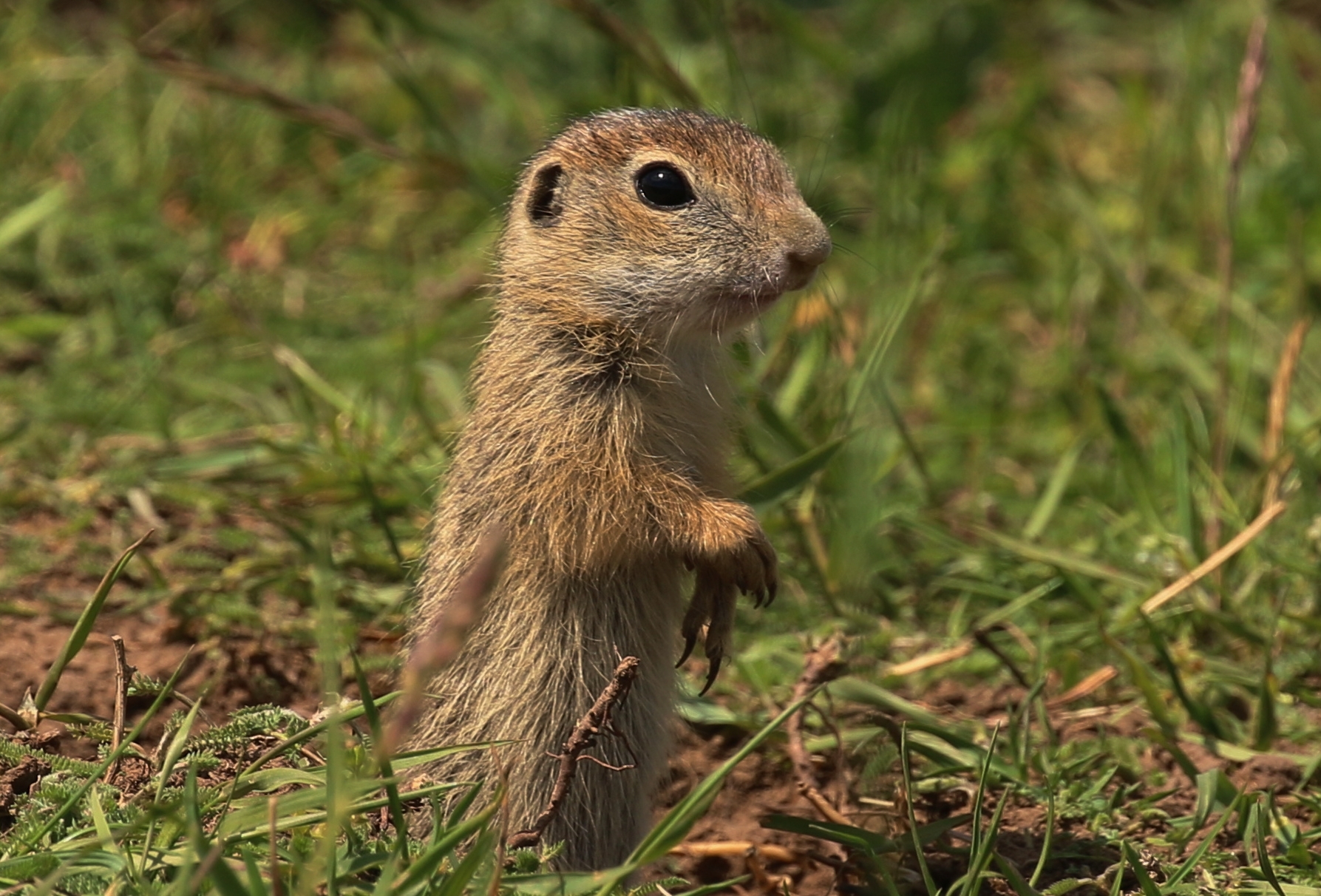Sousliks and Stutox

For over a year, conservationists and farmers have struggled to manage the high populations of voles present in agricultural fields. Despite protests from conservationists, on 3rd September 2020 the Central Agricultural Inspection and Testing Institute (ÚKZÚZ), in agreement with the Ministry of Agriculture, authorised the increased use of rodenticides in the Czech Republic. This means that farmers and other agricultural managers are allowed to use an increased amount of rodenticides and can use the application method of spreading across their land (based on the decision of ÚKZÚZ for specific plots). The Czech Ornithological Society is fighting against the widespread distribution of rodenticides alongside a significant number of members of the public who are particularly concerned about secondary poisoning of their own pets. The influence of Stutox II is not limited to vole populations though and can spread to bird species such as raptors, owls and storks, game species such as hares and pheasants and even our own pets like dogs and cats. But what does this mean for the endangered souslik?
Basic facts:
- The new authorisation concerns rodenticides, namely Stutox II (Zn3P2), which poisons rodents in an attempt to manage their populations. These chemicals are not only toxic to voles but to other mammal and bird species. They are modified to encourage rodent ingestion rather than other species with a focus on size, shape, dose, location and taste/smell.
- In terms of rodenticide application, there are many similarities between sousliks and voles. They too are found in agricultural landscapes, meadows, slopes and edges of fields. Like voles, they also feed on all parts of plants including their leaves, stems, roots, seeds and fruits. Finally, as with voles, sousliks live in burrows under the ground.
- The main difference between the two rodents, in terms of rodenticide application, is their size as adult sousliks weigh between 250-400g compared to voles which weigh between 20-40g.
Is this information is enough to answer the question is Stutox dangerous to sousliks? Yes! If Stutox is applied in an environment where sousliks also live this means that they too can be killed as a result.
Fortunately, most of the souslik populations in the Czech Republic are in environments which are less likely to have a direct application of Stutox such as leisure airports, campsites and protected steppe reserves, but this is not the end of the topic.
Problems for ground squirrels:
Firstly:
Some colonies are limited to agriculturally managed landscapes such as those in Hrušovany u Brna, Velké Pavlovice, Čejč, Újezd u Brna, Jaroslavice and Hnanice. In these areas it is vital that rodenticides are not used.
Secondly:
All souslik colonies in the Czech Republic are small, isolated and often in one clearly defined area. These colonies are very vulnerable and any significant changes to their environments could directly affect their survival probability, as shown through population viability analyses. To mitigate these risks, it is fundamental to preserve the current colonies whilst developing methods to interconnect the colonies and linking these isolated metapopulations. To do this, however, would mean utilising potential connection areas which run through the now poisoned agricultural landscape.
Example:
Thanks to the efforts of the local flying club and the Nature Conservation Agency of the Czech Republic (AOPK), the colony of sousliks at the 7-hectare airport near the village of Miroslav is thriving and expanding. In recent years, young individuals have migrated to the surrounding vineyards, orchards and fields. Small groups have now settled up to 3km from the airport, the source population of the colony. A population consisting of several colonies across various environments has a greater likelihood of survival, however, this will be reversed with increased applications of rodenticides.
Things to consider:
Can we really think (as the representatives of ÚKZÚZ claim) that the use of rodenticides does not have serious consequences for our environment? We just need to look at the state of our other mammal populations which are tied to the agricultural landscape: \
- Sousliks are critically endangered and whilst populations have been restored these are on landscape islands such as airports, golf courses and campsites; \
- Over the past 30 years the state of European hamsters has declined with their range severely reduced resulting with animals now only being found in lowland habitats, along large rivers \
- We are lucky to have 1-2 records a year of the Steppe polecat (have you even heard of it?) as otherwise the species would become extinct in the Czech Republic.
The current regulation on Stutox II means there will be a significantly increased risk of protected, non-target species poisoning as it is not possible for the AOPK to prevent rodenticide application in areas where endangered species are present.
What happens now?
Anyone can help!
If you suspect a poisoned animal, let us know - ALKA Wildlife, ČSO, ČIŽP.
Learn more about your food! Find out who grew it, where it was grown and how. Talk to local farmers and find out for yourselves what is happening to the food you’re eating, before you eat it.
Hunters are the only group of people who are informed of rodenticide application before it’s going to occur. If you’re a hunter - let your local community know.
Farmers - please consider using such means. Just because the state authorises the use of rodenticides, it doesn’t mean you have to use them. There are alternatives! Using poisons should always be the last resort. You can contact us, ČSO or AOPK ČR to discuss which animals could be endangered on your land and what you can do to protect them.

